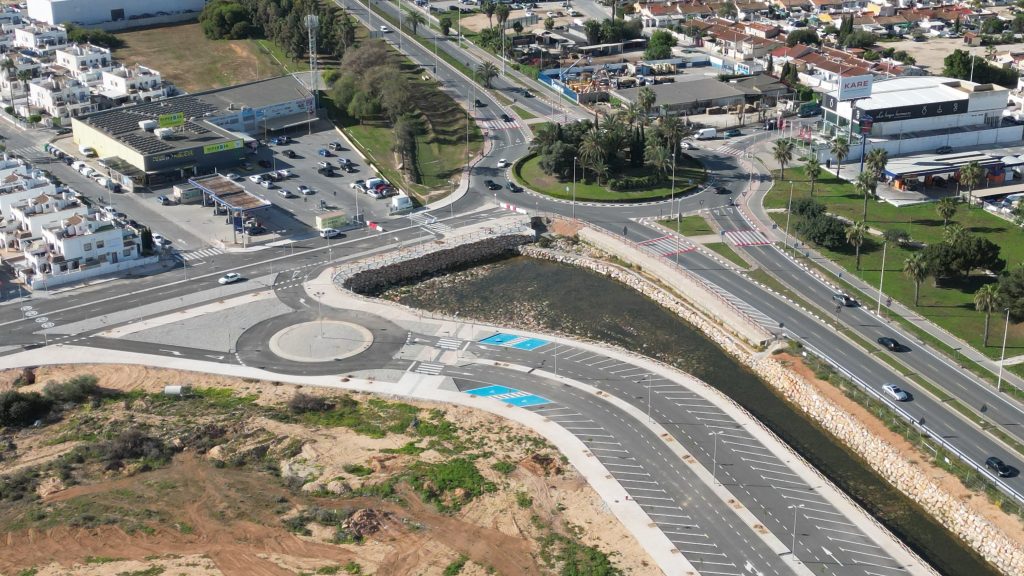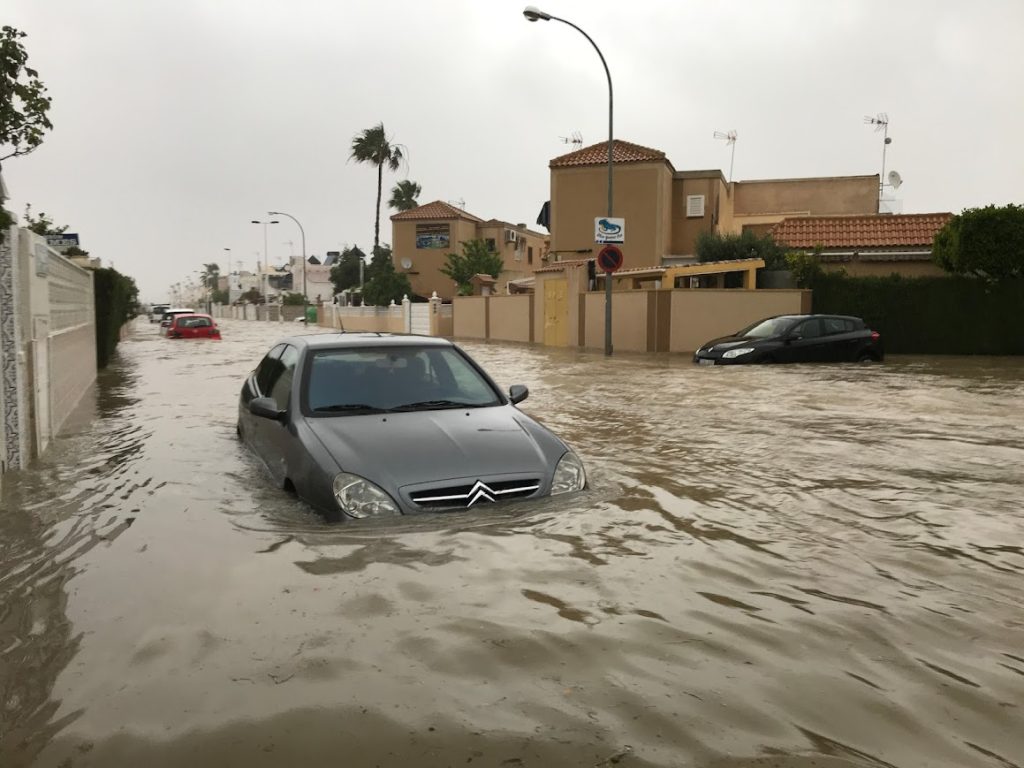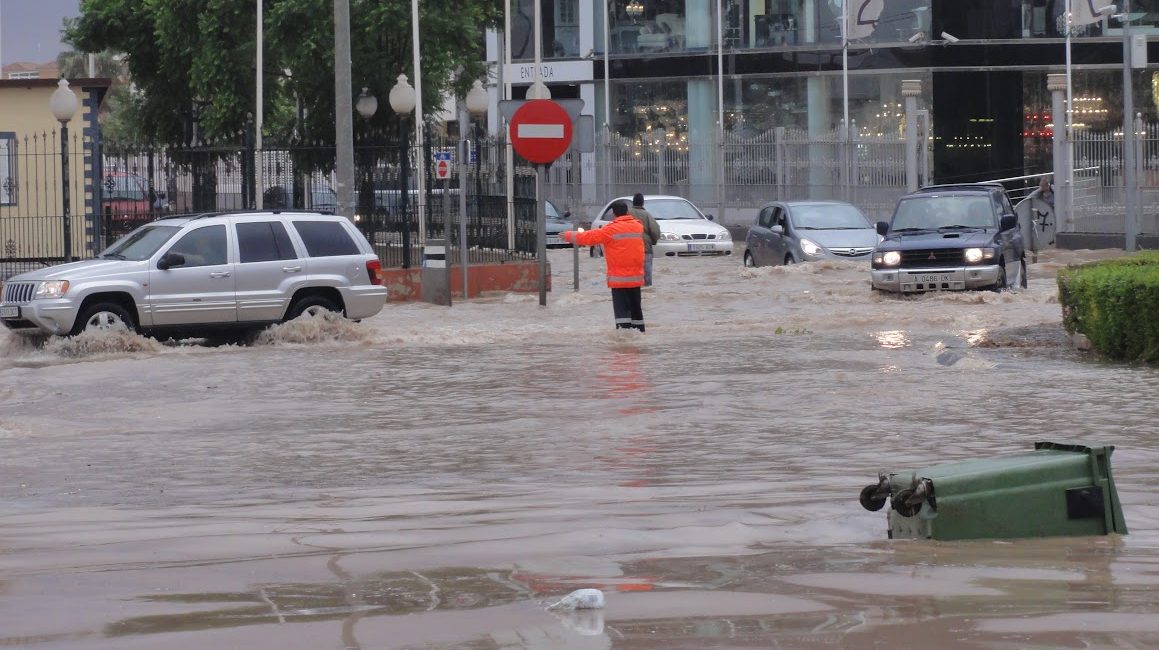The UTE La Hoya, which is in charge of the macro-urban development that is building 7,400 homes in Torrevieja, is to invest three million euros to connect its stormwater drainage network to the one that the City Council plans to build.
The area currently has a storm tank parallel to the CV-905, measuring more than 21,556 square meters and capable of storing 50,000 cubic meters of water that seeps into the ground when it rains.
Commitment
The developer plans to construct the connection within three years, allowing for the evacuation of the rolling zone and another planned area along the N-332 highway, totalling 17,117 square meters. With the plan’s final approval, the corporation absorbed this provision and the infrastructure’s implementation timetable. It is not only about the connection. The La Hoya UTE plan must involve the development of a floodplain, which will be connected to the previously existing reservoir, as well as the construction of a collector along Gardenias Street in Las Torretas to the Torrealmendros floodplain.
To be effective, the City Council must complete the connection point and a €25 million network designed to evacuate stormwater from the catchment area through a collector buried in the greenway to the Acequión canal, then to the bay after settling. A plan that is still in its early phases. There has been no development on the main lines of implementation of the municipal network outside of the Torrealmendros floodplain, and it is not included in the current budget.

Important
The external drainage infrastructure for Sector 20 La Hoya, as the project is known, will be required only when the urban development plan has been finished in four phases and the majority of the residences have been built. Thus, the current drainage basin is expected to defend against flooding because the sector’s flow is gradual. It is expected that until the sector is fully urbanised and built, the peak stormwater discharge that would necessitate this connection will not occur.
The reservoirs are designed to handle all projected rainfall flows, including torrential ones, without being connected to the discharge point. It is believed that the current one close to CV-95 has already eliminated the pre-existing flood risk on the route.
The UTE even plans to preserve the entire area until more than half of the sector is completed, which may take several years.
In 2018, the Protected Areas Service of the Generalitat Valenciana (Generalitat Valenciana) demanded that the developer include specified sustainable drainage solutions in the plan’s final processing phase. These safeguards are critical in a development that affects 1.8 million square meters of land and runs along a moderate but wide slope towards Torrevieja’s pink lagoon.
Performances
These include the creation of lagoon and infiltration ponds, landscaped catchment areas, lowered regions at major traffic crossings, lowered areas within boulevards to moderate the flow, and a water outlet in a storage pond next to the CV-905 highway.
These forecasts dispel many citizens’ concerns about how this infrastructure operates. The reservoir had tremendous flooding after the September rains, particularly along José Carreras Avenue, which will serve as the primary commercial sector in the planned design.
Last August, Agamed, the company that holds the Torrevieja comprehensive water management concession, conditionally accepted the first phase of the plan on UTE La Hoya processing, developing, and executing this stormwater discharge point through its own La Hoya project. This project, in turn, is part of the Torrevieja Special Stormwater Infrastructure Plan, which is still in development before the sector’s definitive infrastructure is accepted and implemented “in order to avoid risks associated with adverse weather events.”

One million euros
The cost of sustaining vital basic services in the first phase of the La Hoya plan, which the City Council approved at the beginning of August, surpasses one million euros (1,054,000). This price does not cover park and garden care, which the municipality has yet to quantify.
The expected annual maintenance costs for the street lighting installations, once operational, are €56,138.82 (VAT included), while the energy supply would cost €51,535. Meanwhile, public road maintenance costs an additional €154,928. The municipality has been providing all of these services since August because they are not affected by the occupancy rate (new residents) or planned construction. In reality, drivers can view a wide, illuminated, and urbanised area now devoid of residences from the CV-905.
Waste collection, transit and street cleaning will be the primary municipal expenses, totalling €773,557 per year. In this situation, it will be a progressive expense, with the developer additionally liable for acquiring and providing the containers for installation. Currently, only 250 of the 7,400 planned dwellings have been built.
These costs must be added to those anticipated for Phases II, III, and IV, which are significantly less in terms of land and housing. The second phase, which is set to begin in October, will entail the construction of 700 public housing units as well as the location of private land for social housing purposes.









No Comment! Be the first one.